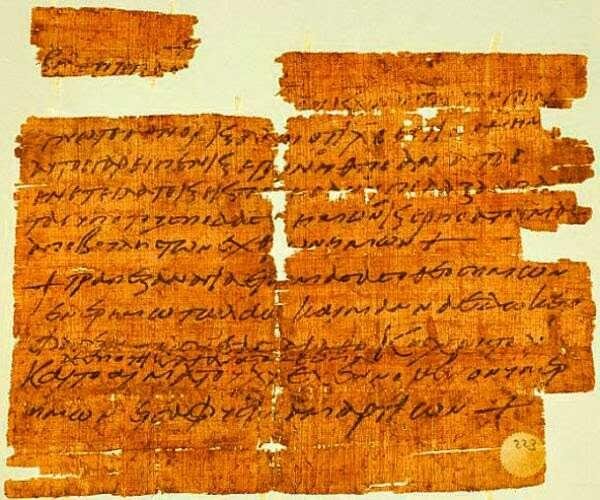Recently, Dr Roberta Mazza of the University of Manchester - the John Rylands Research Institute, has discovered the world's oldest document of the Eucharist Christian liturgy. This document is considered an ancient papyrus of the Egyptian Roman rule of almost 1500 years and refers to the Last Supper and the early Christian 'Manna of Heaven', some 300 years after the Roman emperor Constantine converted.
Ancient Papyrus is written in Greek text and is a genuine combination of Bible verses including Psalms 78: 23-24 and Matthew 26: 28-30. The discovery was introduced by Dr Mazza on September 4, 2014 at a conference in Manchester, UK with the title 'From Egypt to Manchester: Unravelling the John Rylands Papyrus Collection'.
#Amulets Of Ancient Papyrus Fragments Last Supper
The Last Supper is an Early Christian story which tells the first day of the Unleavened Bread Festival or the Passover, Jesus sent two of his disciples ahead with very specific instructions to prepare the Passover meal. That night, Jesus sat at a table with 12 disciples to eat his last meal before being crucified. As they eat together, he tells the twelve that one of them will betray him.
This papyrus was originally found in Egypt in the 19th century, and is currently stored in the John Rylands Library, Manchester. This text shows how Christians adopted the practice of ancient Egypt wearing amulets to protect the wearer from harm. The writing of ancient papyrus text pieces was followed by Christians who replaced the prayers for the Egyptian and Greco-Roman gods by extracting from the Bible.
( )
)
According to Mazza, to this day Christians use passages from the Bible as a protective talisman so that this 'amulet' marks the beginning of an important trend in Christianity. Although it is almost unknown who the owner is, according to archaeologists this ancient papyrus could have belonged to the inhabitants of the nearby village of Hermopolis (el-Ashmunein).
Hermopolis lies a small village called El Ashmunein (originally from Shmun), the capital of the 15th (Hare) Nome in Upper Egypt. When ancient times, this place was one of the great Egyptian cities known as Khmunu (Shmun). The name Shmun refers to the eight ancestors who created the first child and is believed to be the first-ever sun in this city, eventually creating the world.
This papyrus is a very rare example of Christianity and the Bible, and thanks to this discovery, archaeologists suspect knowledge of the Bible was more embedded in Egypt in the 6th century AD. The researchers also found that the ancient papyrus was written in a recycled paper version using spectral imaging techniques.
The faint letter behind the paper is considered a receipt for the payment of taxes of wheat that is certified by a tax collector from the village of Tertembuthis, the rural ancient town of Hermopolis (modern el-Ashmunein). The talisman will cut the piece of paper as a receipt, written on the other side and then the ancient papyrus folded is stored in a necklace or pendant.